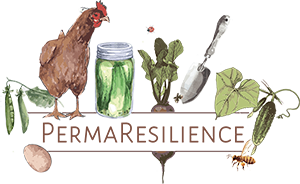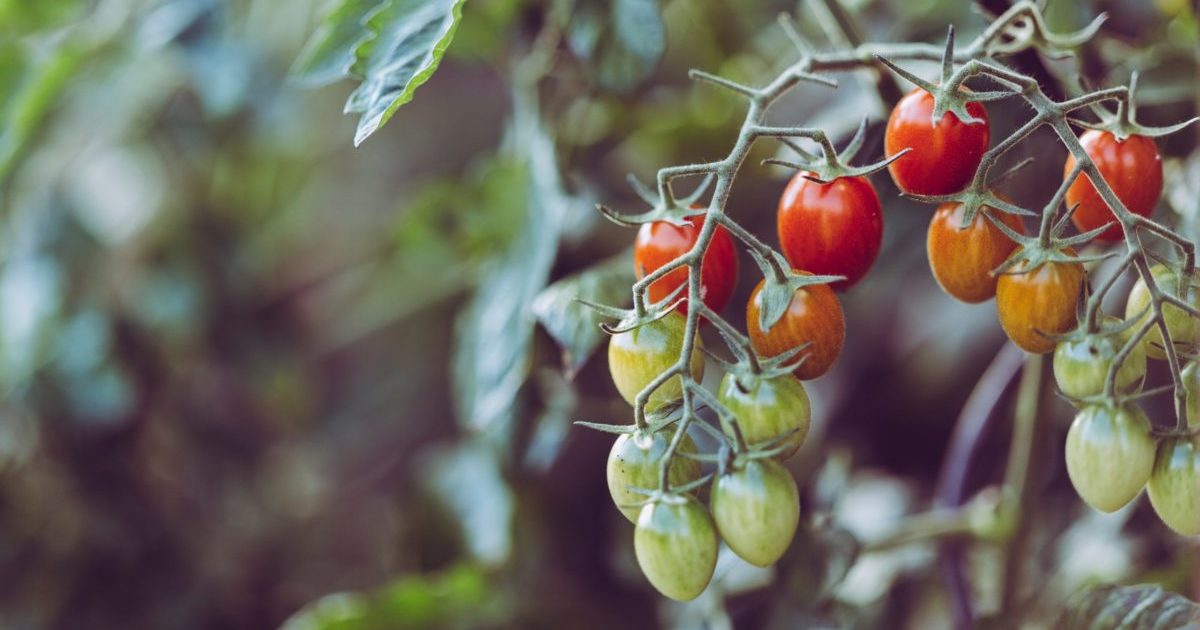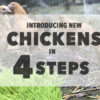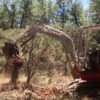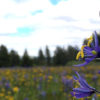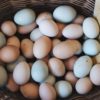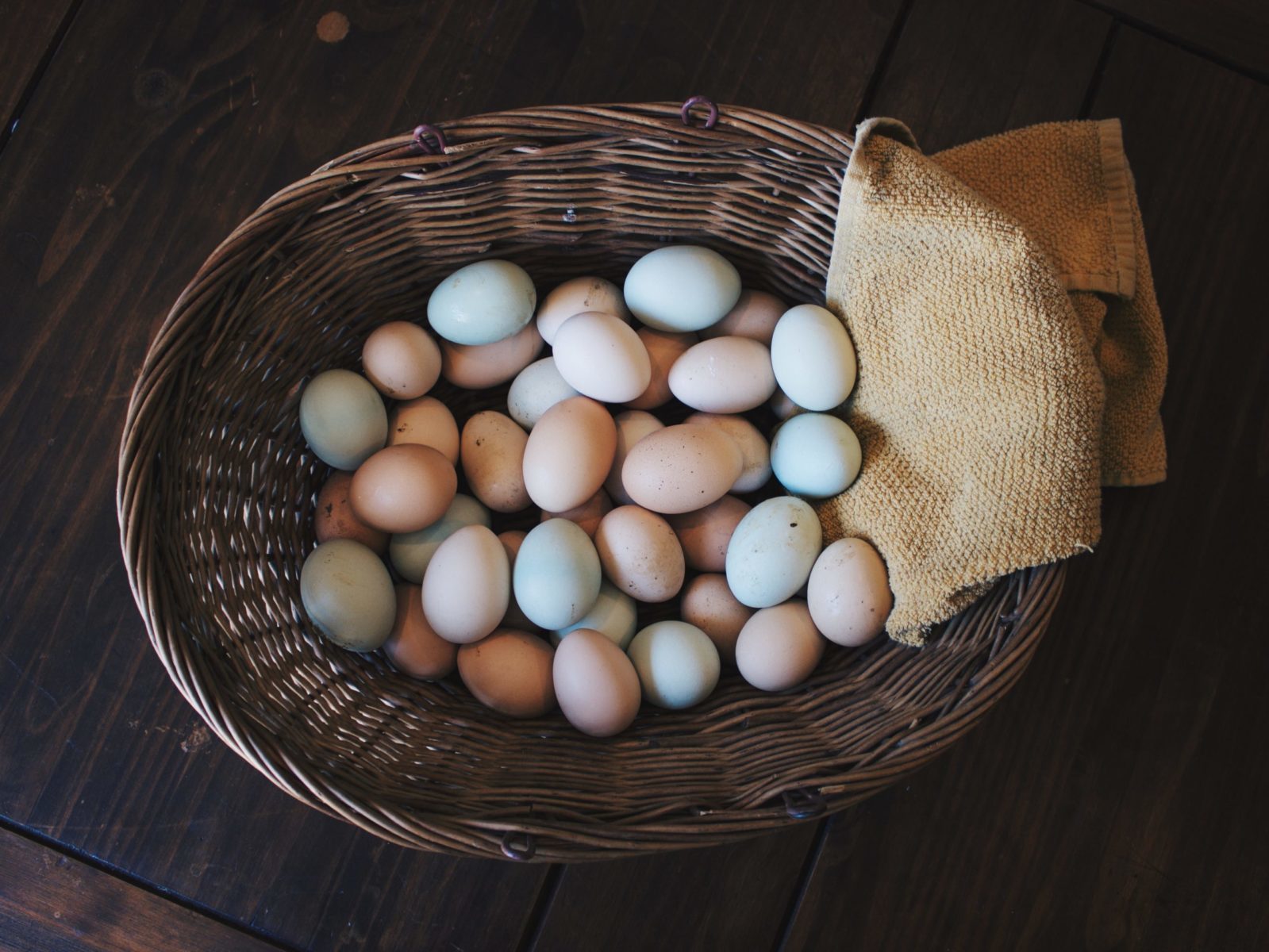Your garden struggles could exist because of the method that you’re using and have nothing to do with having a brown thumb. Permaculture is likely the method that you need to integrate in order to create the abundant homestead of your dreams.
Video Transcript:
Hi, I’m Bret James, and my family and I have been living sustainably and self-sufficiently for about 10 years now. We’ve grown massively abundant gardens and food forests, in addition to other self-reliant adventures such as raising animals holistically, rainwater harvesting, and environmental restoration, and we even live in a passive solar strawbale home in the high desert mountains of Southwest Colorado.
But it didn’t use to be this way. In fact, we used to really struggle to grow our own food, let alone do any of these other sustainable and self-sufficient things I just mentioned.
You see, years ago when we were first starting to garden, it was a total uphill battle – poor soil, weeds, pests, water issues, and really minimal harvests. At the time, it just seemed much easier to go to the grocery store and buy our products instead.
But the thing was, we knew that the food at the store was often toxic and that even organic food lacked nutrition. Not to mention, we didn’t want to rely on the fragile food supply system in turbulent times, which is now even more clearly in jeopardy as even mainstream media is warning of coming food shortages.
Now, back then, we were almost ready to give up on our garden and abandoned the dream of growing homegrown food. But thankfully, we discovered that our failing garden was actually caused by the methods that we were using that created all of our problems, not just our incurable brown thumb.
That was at that time when we switched methods and implemented new tools and new strategies, and everything changed. Today, our gardens here are so effortless, it’s almost crazy.
I’m talking hundreds and hundreds of pounds of healthy homegrown food we grow for less than an hour of work a week in my gardens without weeding, tilling, using organic pesticides, herbicides, and so on. And for the icing on the cake, our homegrown food is more nutrient-dense than any store-bought food, organic produce included, giving my family the best health and medicine for illness resistance, which is important given the current circumstances of the world.
As you’re probably already aware, eating well is the best way to ensure your body and immune system are in top-notch condition and able to prevent illness.
So to get started, I want to ask you a question: What are your biggest problems, struggles, or obstacles to growing your own food?
Now, I’ve mentioned a few things already, but what is your biggest struggle in the garden? The one that frustrates you the most, if you got it?
Because I have the key that can drastically turn that struggle into your biggest asset in the garden. So listen to this closely and see which one or ones you relate to the most.
Now, do your plants just struggle, where some plants just never seem to take off, or worse, some may look beautiful one day and then die the next?
Maybe you feel like you just have crappy soil and you can’t figure out why it’s so unworkable in debt.
Or do your plants seem to be party central for pests and disease, and like clockwork, the aphids, and powdery mildew just show up without being invited?
And have you put a ton of money and energy into your garden that keeps dying and struggling, and you feel like it’s not really worth the effort?
Well, let’s not forget the weeds, right? Or what about the time and energy it takes to try to even maintain a garden? As it just felt overwhelming? Or do you feel like you don’t have enough space to make it worth your while?
Now, whichever these drag you down the most, they all can leave you feeling frustrated, defeated, and discouraged, which is the last thing that you want to be in your garden.
Instead, it should be your happy, green, abundant place. But sadly, I talked to many people who think that they are just incapable of having the garden they dream of. And this leaves even experienced gardeners feeling like they can’t provide for the family, can’t make the time worthwhile, or can’t live a sustainable or self-sufficient life, no matter how hard they try.
Here’s where it gets interesting…
You see, when I ask people what they think has prevented them from overcoming these struggles growing their own food, I get the same answers over and over, such as “I don’t know where to start” or “I have a lack of time to figure it out or just do it,” or “it’s just too much work and effort and it doesn’t seem worth it,” or “I don’t have the knowledge; there’s too much conflicting information out there.” But the thing is, none of these are really the problem.
They’re all a byproduct of something else. If we can just solve the actual problem, almost of these concerns just dissolve. So then, what is that problem? It’s the strategies and the methods. In other words, it’s the way you are gardening that causes it to struggle, not you.
So imagine if you could simply implement new tactics and tools and suddenly alleviate all your growing struggles. Isn’t that exactly what you would want? Now, you might be thinking, “But Brett, I think I already am using the best strategies. I found lots of great ones on Pinterest.” Well, not quite.
Let’s dive deeper, and I’ll show you why. Now, I’m guessing that most of you here, watching this, is likely not using conventional growing methods. You know, the ones that involve chemicals, artificial petroleum fertilizers, pesticides, or practices such as tilling soils between each crop this season. And you’re likely aware that gardening this way is harmful to both you and the Earth.
That using petroleum products to grow food seems, well, not quite how it should be, right? These conventional practices, deplete the soil of nutrients, kill soil life, and leave the land unable to support healthy and strong plants without the endless cycle of needing to use more and more chemicals and petroleum fertilizers.
So, I’ll assume most of you here are more using organic techniques, right? Making sure that anything you’re adding to the garden is of better quality and probably organic.
Now, this is a huge step in the right direction, yes, but there are still some major fundamental issues with organic gardening that cause gardens to struggle, be way more work than they need to be, and be more time-consuming than they need to be.
Now, perhaps this is even a little bit shocking because you might have thought growing organically was the best method you could be using. So, I want to share with you where the organic techniques are failing you and what you can be doing differently instead.
Now, first, while organic gardening does place a higher importance on soil health than chemical conventional gardening by using compost, organic materials, and so on, it’s still not really understanding what the soil and soil life needs for optimal plant growing conditions.
For example, organic strategies include things still, such as tilling garden bits or leaving soil exposed and bare, which is counterproductive and essentially negates the efforts to improve the soil.
Now, this might explain why so many gardeners are confused as to why nothing they do seems to turn their dead dirt into healthy living soil.
Secondly, similar to conventional gardening, organic gardening still is using store-bought pesticide products, only now they’re labeled organic. Now, trust me, I used to think that this meant that they were safe and fine to use too, but after learning more, I realized that these products can still be toxic to both humans and the environment in your garden.
For example, take the popular neem oil treatment. Many think this is a good solution for getting rid of pests on your plants in an organic garden. Have an aphid problem? Use some neem oil. It’s safe and effective, right? But have you considered that it’s not just able to target the pests that you want to kill?
It’s killing all of the beneficial creatures in your garden too, including the ladybugs that eat the aphids, the soil microbes that help deliver the nutrients to your plant roots, all of them. Not just the pesky aphids die.
To add salt to the wound, some neem oils are mixed with a majority of toxic chemicals, effectively the same as using an entirely chemical product in your garden. So all that hard work on your soil and plant health is slowly negated every time you bring something like neem oil into your garden.
Now, the third thing organic gardeners got right but wrong at the same time is that instead of petroleum fertilizers, they use organic fertilizers, such as fish emulsion. Sure, many organic fertilizers do add nutrients to your soil, but at what cost?
You see, most gardens need a ton of fertilization to make up for nutrient deficiencies existing in the soil, and to improve the soil life and the soil structure. And the quantities needed to make any meaningful improvement in the garden? It’s not only expensive but unsustainable when you consider the sourcing of the products, the packaging, and the shipping to stores across the country.
All right, so what I hope you can see here with these three examples is that even if you garden organically, it does not guarantee an abundant garden. And in most cases, it means you’re working harder than a conventional gardener. For example, a conventional gardener sprays herbicides on a weed and walks away, and they’re done.
Now, first, while organic gardening does place a higher importance on soil health than chemical conventional gardening by using compost, organic materials, and so on, it’s still not really understanding what the soil and soil life needs for optimal plant growing conditions.
For example, organic strategies include things still such as tilling garden bits or leaving soil exposed and bare, which is counterproductive and essentially negates the efforts to improve the soil. Now, this might explain why so many gardeners are confused as to why nothing they do seems to turn their dead dirt into healthy living soil.
Secondly, similar to conventional gardening, organic gardening still is using store-bought pesticide products, only now they’re labeled organic. Now, trust me, I used to think that this meant that they were safe and fine to use too, but after learning more, I realized that these products can still be toxic to both humans and the environment in your garden. For example, take the popular neem oil treatment.
Many think this is a good solution for getting rid of pests on your plants in an organic garden. Have an aphid problem? Use some neem oil. It’s safe and effective, right? But have you considered that it’s not just able to target the pests that you want to kill? It’s killing all of the beneficial creatures in your garden too, including the ladybugs that eat the aphids, the soil microbes that help deliver the nutrients to your plant roots, all of them.
Not just the pesky aphids die. To add salt to the wound, some neem oils mixed with a majority of toxic chemicals effectively the same is using an entirely chemical product in your garden. So all that hard work on your soil and plant health is slowly negated every time you bring something like neem oil into your garden.
Now, the third thing organic garden got right but wrong at the same time is that instead of petroleum fertilizers, they use organic fertilizers, such as fish emulsion. Sure, many organic fertilizers do add nutrients to your soil, but what cost?
You see, most gardens need a ton of fertilization to make up for nutrient deficiencies existing in the soil and to improve the soil life and the soil structure, and the quantities needed to make any meaningful improvement in the garden. It’s not only expensive but unsustainable when you consider the sourcing of the products, the packaging, and the shipping to stores across the country.
All right, so what I hope you can see here with these three examples is that even if you garden organically, it does not guarantee an abundant garden, and in most cases, it means you’re working harder than a conventional gardener. For example, a conventional gardener sprays herbicides on a weed and walks away, and they’re done, whereas the organic gardener often spends hours on their hands and knees pulling each weed manually, which is no fun at all, right?
Now, don’t get me wrong. I commend anyone who’s growing food, regardless of how, and yes, even some people have good success with the organic method. But if your garden is struggling or if it takes a ton of time and a ton of work, then you might want to listen to the rest of this training to find out the new and the best method of growing food, which is the easiest way there is that so many people are having success with.
So, what is permaculture? Well, first, let me ask you this. Does a forest require humans to grow? Does it require tilling, weeding, watering, or applying fertilizers, pesticides, and herbicides? No, it does not. Or does a wild apple tree require humans to pick the apples, remove the seeds, plant the seeds
“They have eye-catching arrays of colorful flowers, lush green ground covers, and plants extending in all directions. Permaculture Gardens are symbiotic, where everyone is welcome and everyone assists each other in a positive, beneficial way.
And this mutually beneficial relationship is how we build soils, reduce water use, and improve plant health, using the lushness and resilience of the natural environment.
Now, what makes permaculture gardens unique are the tools and strategies pulled from permaculture and applied to the organic garden to give us the most modern and ancient practices combined into the perfect balance.
So, permaculture is basically a method that blends agriculture, ecology, and landscape design together. And in there, we find a balanced intersection between growing food, the natural environment, and human needs.
And you can set that intersection by using fundamental permaculture tools and methods, one of which is called connections. Now, simply put, all elements in nature are infinitely interconnected.
In other words, everything takes from something else and is also benefited by something else within the context of its ecosystem. This connection is what creates sustainability and regeneration within a natural ecosystem, and it can do the same in your garden.
Let’s look at an example of what is called a plant guild, which is just a permaculture strategy where we intentionally stack plants together as a combination of plants.”
Now, as permaculture food growers, when we plant our gardens, we aim to minimize the input and maximize the output without creating waste. When we observe a forest, we see this very process in action in the form of a plant guild. Now, a guild is just a collection of plants that work together to enhance each other through their various natural functions, providing physical support, extra nutrients, protection, pest repellent, nutrients, mulch, and so on.
Guilds are a popular way to select and place plants in a permaculture garden, as their patterns mimic nature’s own blueprint for regenerative design. By planting in guilds, we are able to substantially increase and diversify our yield while reducing our labor time and cost and getting more abundance in a small amount of space.
Now, this is revolutionary gardening, isn’t it? Or rather, it’s the way nature intended it to be and makes our garden and life so much easier, making so much more sense, right?
